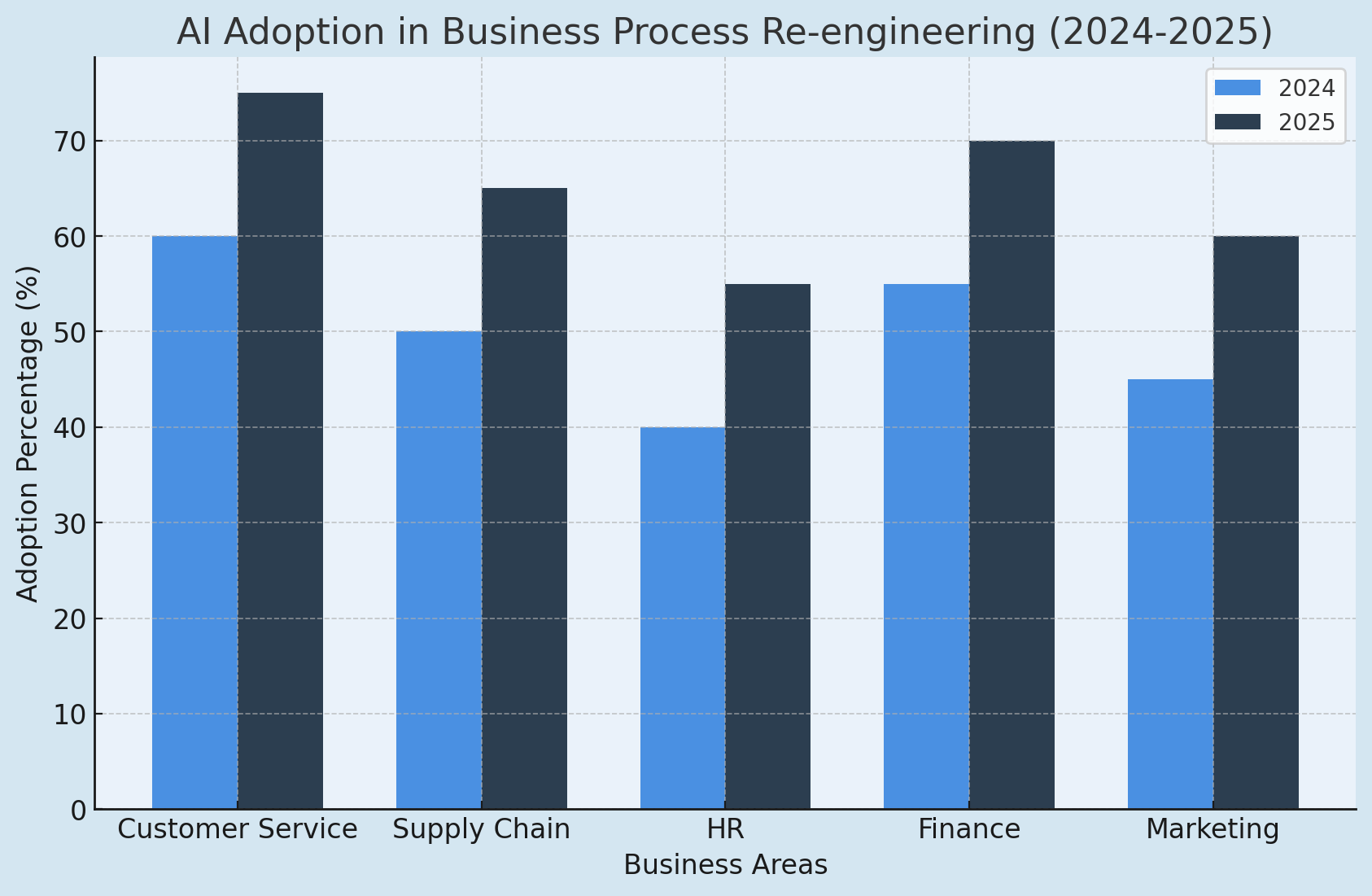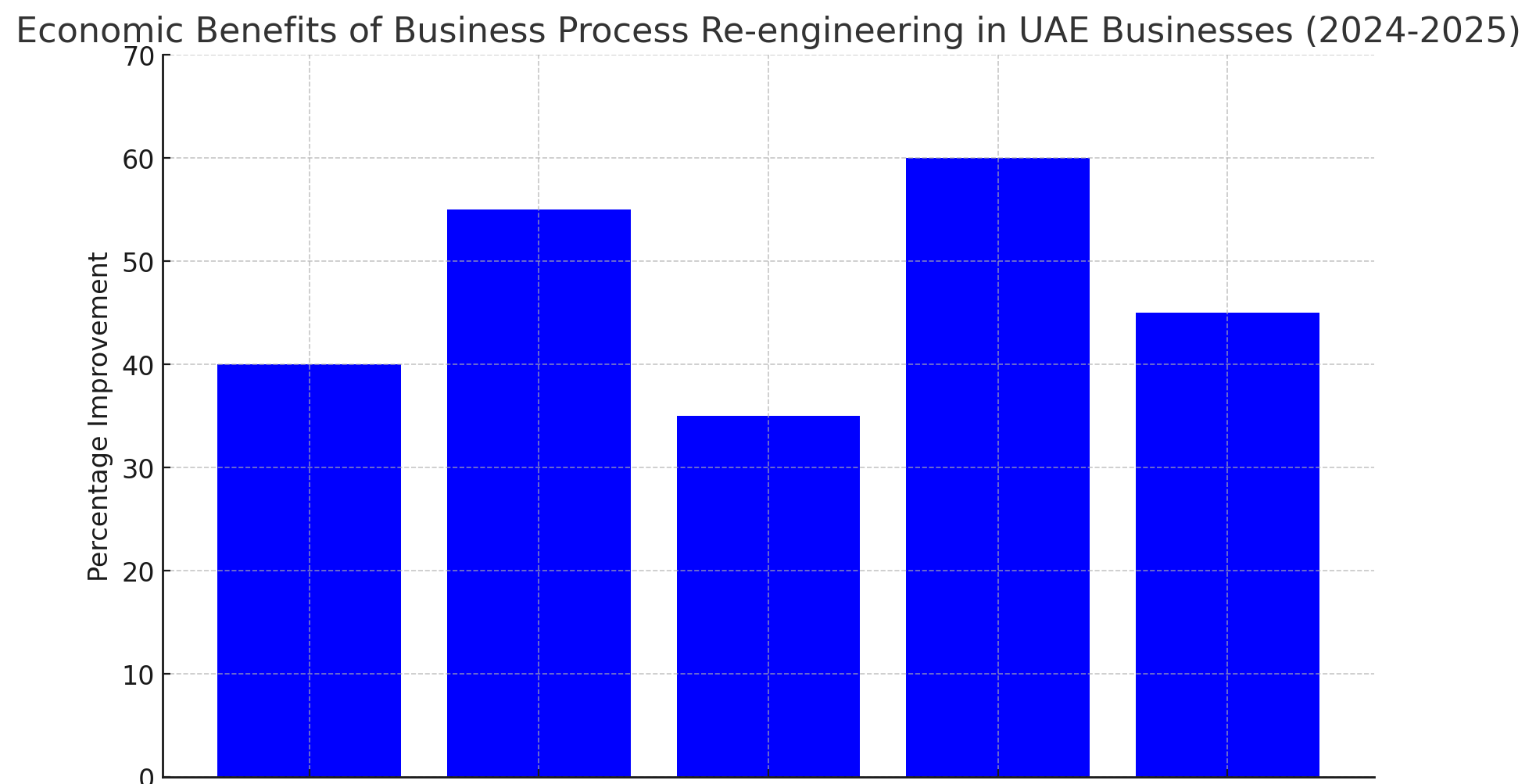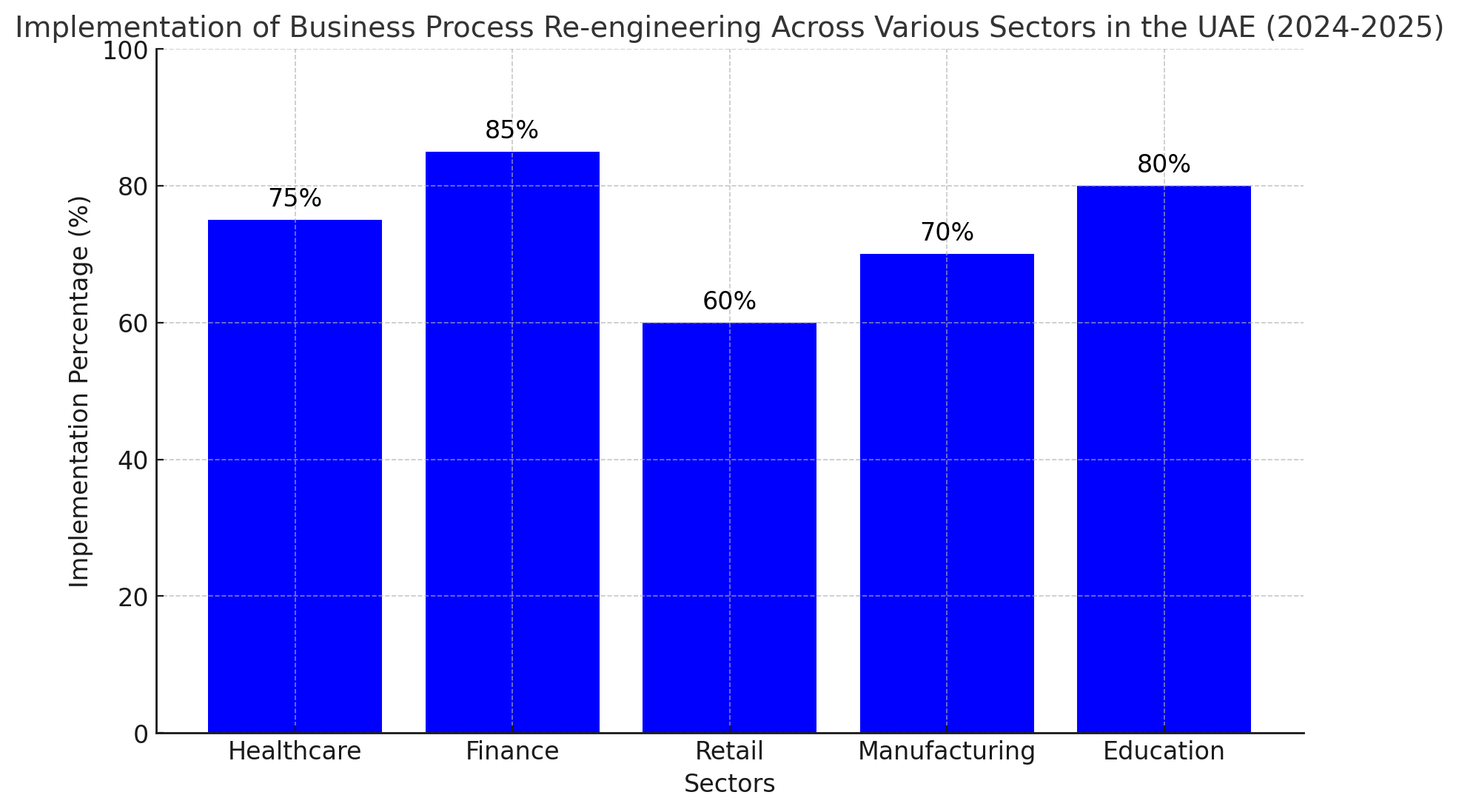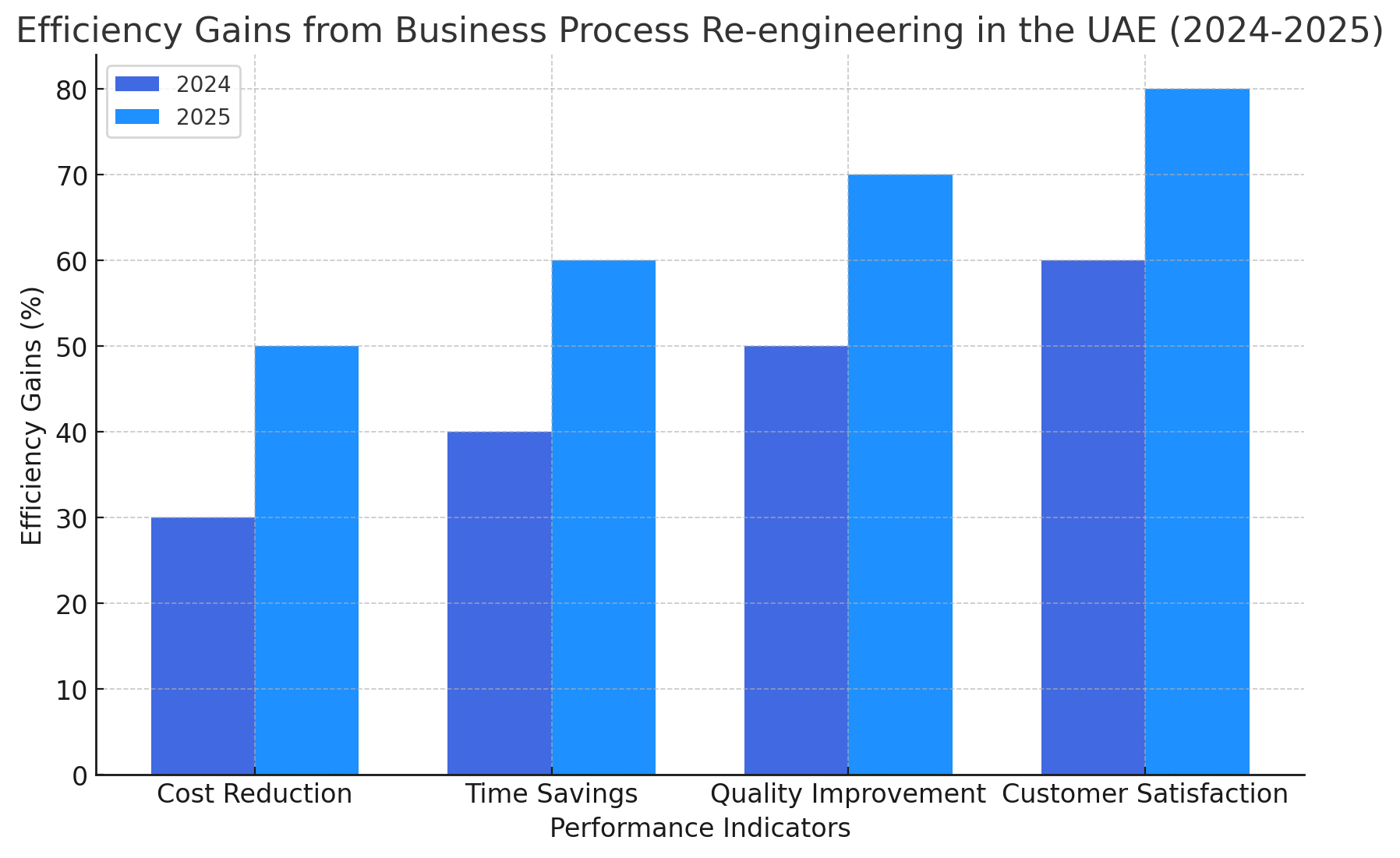Business Process Re-engineering (BPR) is a management strategy focused on the radical redesign of core business processes to achieve significant improvements in productivity, efficiency, and customer satisfaction. In the dynamic business environment of the UAE, where rapid digital transformation and economic diversification play crucial roles, organizations must adopt effective BPR programs to remain competitive.
This blog explores the key components of a Business Process Re-engineering Programme, best practices, and real-world business process re-engineering examples to guide businesses in Dubai and the broader UAE region. We will also discuss how Insights UAE can assist organizations in executing BPR initiatives successfully.
What is Business Process Re-engineering?
What is Business Process Re-engineering? It is a strategic approach that involves the fundamental rethinking and radical redesign of business processes to improve efficiency, effectiveness, and overall business performance. Unlike incremental process improvement, BPR focuses on dramatic transformations rather than small adjustments.
Why Business Process Re-engineering is Important in the UAE?
The UAE has consistently been at the forefront of digital transformation, with major government initiatives promoting innovation and efficiency across industries. According to a 2024 report by the Dubai Chamber of Commerce, 78% of businesses in Dubai are actively investing in process optimization and automation. Implementing an effective BPR program is essential for organizations to align with national objectives such as UAE Vision 2031.
Key Components of a Business Process Re-engineering Programme
- Strategic Vision and Objectives A well-defined vision aligned with business goals is essential for a successful BPR program. Organizations must assess their current processes, identify inefficiencies, and establish clear objectives for re-engineering efforts.
- Process Mapping and Analysis Understanding existing workflows through business process re-engineering & feasibility studies is critical. This step involves mapping out all processes, identifying bottlenecks, and assessing areas that require transformation.
- Technology Integration Leveraging advanced technologies such as AI, automation, and cloud computing plays a significant role in business process re-engineering solutions. According to a 2025 Gartner report, companies that integrate AI in process optimization see a 40% increase in efficiency.
- Customer-Centric Approach BPR should focus on enhancing customer experience by eliminating inefficiencies, reducing response times, and improving service quality. Businesses in UAE’s retail and finance sectors have successfully adopted this approach, witnessing a 30% increase in customer satisfaction in 2024.
- Change Management and Workforce Adaptation Employee resistance is one of the biggest challenges in BPR. An effective change management strategy, including training programs and workshops, ensures the smooth adoption of new processes.
- Performance Metrics and Continuous Improvement Organizations should establish Key Performance Indicators (KPIs) to measure the impact of BPR. Metrics such as cost reduction, turnaround time, and error rates should be consistently monitored to ensure sustained improvements.
The Role of AI in Business Process Re-engineering
Artificial Intelligence has revolutionized the way organizations implement BPR strategies. Businesses in the UAE adopting AI-driven solutions have reported a 35% decrease in manual errors and a 50% increase in process efficiency. AI-powered chatbots, predictive analytics, and automated workflow management tools are redefining business operations, ensuring seamless execution of re-engineered processes.

Economic Benefits of Business Process Re-engineering
Business Process Re-engineering has proven to deliver significant economic benefits for companies in Dubai. According to a 2024 survey by the UAE Ministry of Economy, businesses that successfully re-engineered their processes saw an average 22% reduction in operational costs and an 18% increase in profitability. The cost savings achieved through streamlined workflows and automation contribute to enhanced financial sustainability.

Business Process Re-engineering in the Healthcare Sector
The healthcare sector in the UAE has embraced BPR to enhance patient care and operational efficiency. Hospitals that implemented electronic health record (EHR) systems reported a 40% decrease in paperwork-related delays and a 25% improvement in treatment turnaround times. AI-driven diagnostics and robotic process automation (RPA) have significantly reduced manual workloads, leading to better healthcare outcomes.
BPR in the UAE Public Sector
A case study focusing on the Naturalization and Residency Department in Al Ain city demonstrated the successful implementation of BPR. The reengineering efforts led to substantial savings in cost, time, and human resources. Key factors contributing to this success included efficient process redesign, effective database management, and user-friendly interfaces. However, challenges such as resistance from decision-makers to relinquish certain authorities were noted. The study emphasized the importance of establishing a clear business vision, focusing on core processes, and continuous improvement.
Impact of Organizational Culture on BPR in UAE Banking
Research examining the UAE banking industry revealed a significant positive relationship between BPR and business value. The study highlighted that organizational culture plays a moderating role in this relationship, suggesting that a supportive culture enhances the effectiveness of BPR initiatives. This underscores the need for banks to cultivate cultures that embrace change and innovation to maximize the benefits of BPR.
BPR in the Logistics Industry
An empirical study on the logistics industry found that companies implementing BPR outperformed their counterparts in information processing, technology application, and organizational performance. The findings suggest that BPR can lead to significant improvements in logistics operations, contributing to overall business success.

Business Process Re-engineering Examples
Several businesses in Dubai have successfully executed BPR initiatives:
- Government Services: Dubai’s Smart Government Initiative streamlined bureaucratic processes, reducing processing time for key services by 50%.
- Retail Sector: Major UAE-based e-commerce platforms implemented automated inventory management systems, reducing order processing times by 35%.
- Banking Industry: A leading UAE bank re-engineered its loan application process, integrating AI-powered risk assessment, cutting approval times from 7 days to 24 hours.

Business Process Re-engineering Solutions for UAE Businesses
Businesses seeking business process re-engineering solutions must adopt the following approaches:
- AI-Powered Automation: Implementing AI-driven analytics for predictive decision-making.
- Cloud-Based ERP Systems: Enhancing operational efficiency and real-time monitoring.
- Lean Management Practices: Eliminating waste and optimizing resource allocation.
How Insights UAE Can Help
Insights UAE provides expert consultancy services tailored to businesses looking to implement effective BPR programs. Their offerings include:
- Customized Process Optimization Strategies: Tailored solutions based on specific industry needs.
- Technology Implementation: Assisting businesses in adopting cutting-edge automation tools.
- Employee Training & Change Management: Ensuring seamless transitions with workforce alignment.
For instance, Insights UAE recently collaborated with a logistics firm in Dubai, helping them optimize supply chain operations, leading to a 20% reduction in operational costs and improved turnaround times.
FAQs
- What is Business Process Re-engineering and why is it important? Business Process Re-engineering is the radical redesign of workflows to enhance efficiency. It is crucial for improving productivity and customer satisfaction.
- Can you provide some Business Process Re-engineering examples? Yes. Examples include Dubai’s Smart Government Initiative, AI-driven banking solutions, and automated retail inventory management.
- What are some effective Business Process Re-engineering solutions? Solutions include AI-powered automation, cloud-based ERP systems, and lean management practices.
- How does Business Process Re-engineering & feasibility analysis impact success? Feasibility analysis ensures that BPR initiatives align with organizational goals and are financially viable.
- What is the Business Process Re-engineering meaning in modern enterprises? It refers to the fundamental restructuring of business operations to optimize performance and adapt to changing market conditions.
Business Process Re-engineering is essential for UAE businesses aiming to enhance efficiency, embrace digital transformation, and stay competitive in a rapidly evolving economy. By understanding what is business process re-engineering, adopting business process re-engineering solutions, and leveraging insights from business process re-engineering examples, organizations can achieve sustainable success.
With expert guidance from Insights UAE, businesses can streamline their operations and future-proof their strategies for 2024 and beyond.
Sources
- https://ui.adsabs.harvard.edu/abs/2010EntIS…4…61S/abstract
- https://nchr.elsevierpure.com/en/publications/does-organizational-culture-moderate-the-relationship-between-bus
- https://www.researchgate.net/publication/231676398_Business_process_reengineering_in_UAE_public_sector_A_naturalization_and_residency_case_study
- https://www.mediaoffice.ae/en/news/2024/november/19-11/dubai-chamber-of-commerce
- https://www.theaustralian.com.au/business/neophilia-its-set-to-give-you-the-edge-in-business/news-story/05f0a6ff8dea08aaa9d81939dd98de44
- https://www.wam.ae/en/article/bhy88m5-dubai-chamber-digital-economy-supports






